***MY FIRST PODCAST APPEARANCE with MemoryMedieval***
The topic is a BIG one, the FOURTH CRUSADE!
YouTube: https://www.youtube.com/watch?v=FoeifvfK6-8
Spotify: https://open.spotify.com/episode/3IWi3JGGXHnqLGtTspbpvJ?si=f21bc5e348ad450d
Apple Podcasts: https://podcasts.apple.com/us/podcast/devastating-tragedy-the-fourth-crusade-giga-episode/id1769283005?i=1000705927866
These picks are just my subjective opinions. But, I thought about this list very carefully. It is important to consider that there are places which, although amazing, I believe were not as wondrous as this selection and thus had to be left out. It was very hard to pick some of these at the expense of other selections. Also, this is not a list of just the best surviving monuments in Istanbul today, some survive some do not.

My 7 Wonders of the Byzantine/Medieval Roman World:
1. Hagia Sophia 2. Holy Apostles & the mausoleums 3. Column of Justinian 4. Aqueduct of Valens/water system of Constantinople 5. The Church of the Pharos and its Relics 6. Hippodrome & its monuments 7. Walls of Constantinople
1. Hagia Sophia:
This was the easiest and most objectively obvious choice, any list would include it:
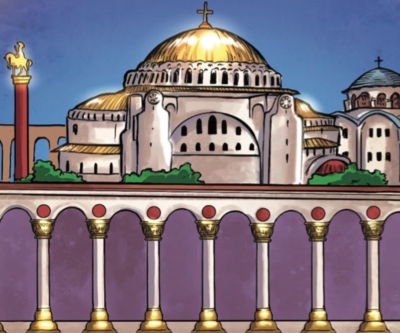
“No one ever became weary of this spectacle, those who are in the church delight in what they see & when they leave, magnify it in their talk. Moreover it is impossible accurately to describe the gold, silver, & gems, presented by the Emperor Justinian”
-Prokopios (6th century)
The church was “so exceedingly great, as it towers upwards like the mountains & leaves below all those things which art sets its hands to create, & so exceedingly beautiful as it shines forth, for all its age, as though it had been raised above time itself”
-Paul the Silentiary
FOR MY ARTICLE on the Hagia Sophia, click HERE
2. Church of the Holy Apostles:

“This Church…is in its great size the greatest & in its beauty the most beautiful…adorned by its great artistry & brilliancy, is an indescribable loveliness, an unimaginable creation, a work of art of human hands surpassing human thought”
-Nikolaos Mesarites(~1200AD)
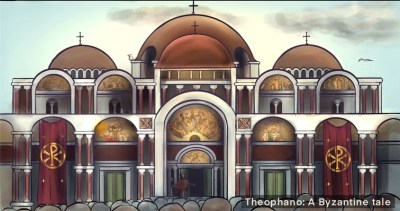
Robert De Clari described the church: “Elsewhere in the city there another church which was called the church of the Seven Apostles. And it was said to be even richer and nobler than the Church of Saint Sophia. There was so much richness and nobility there that no one could recount to you the richness and nobility of this church. And there lay in this church the bodies of seven apostles. There was also the marble column to which Our Lord was bound, before He was put on the cross. And it was said that Constantine the emperor lay there and Helena [Constantine’s mother], and many other Emperors.”
FOR MY ARTICLE on the Holy Apostles, Click HERE
3. The Column of Justinian
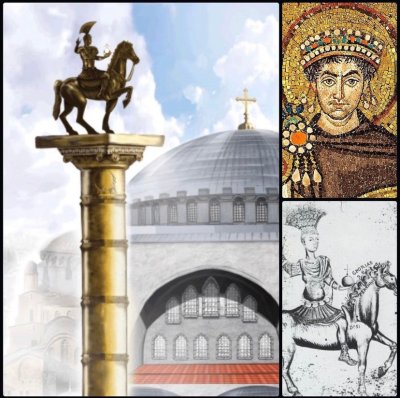
“It bears conspicuously plain for all to see a horseman on high, that great man Justinian, wearing a golden crown and a marvellous crest, stretching out his hand to the sky so that it draws near to the vault of the stars and he seems to touch the chariots of the moon. The column held first rank among the wonders which had been set fast in place on the heights of the city, although it was erected somewhat later in time than the famous pillar built earlier in the forum that then took second rank, that column indeed of marvellous porphyry set up in the forum with good auguries long ago, the one that most powerful Constantine raised up.” The fact he even ranked the Column of Justinian above the Column of Constantine shows how impressive it was!
-Constantine of Rhodes(10th century)
FOR MY ARTICLE on the Column of Justinian, Click HERE
4. Aqueduct of Valens/Water system of Constantinople
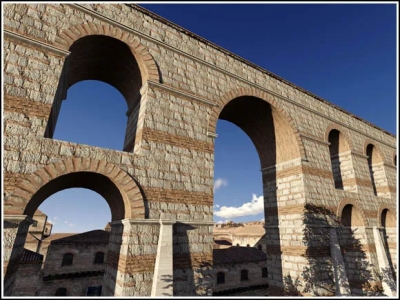
Byzantium1200 reconstruction of the aqueduct of Valens. Photo Credit: http://www.byzantium1200.com/aquaduct.html
“At over 250km it is the longest water supply line known from the ancient world & it remains one of the greatest achievements of hydraulic engineering. It has however been largely ignored in all standard accounts of Roman hydraulic engineering. More than 30 stone bridges/many kilometers of underground tunnels carried the water over mountain/plain. The known system is at least 2.5x the length of the longest recorded Roman aqueducts…one of the most outstanding surveying achievements of any pre-industrial society”
-The water supply of Constantinople: archaeology and hydrogeology of an Early Medieval city by P. Bono, J. Crow, and R. Bayliss
5. The Church of the Pharos and its Relics:
The Church itself was small, but immaculate. However, it is not the building but the collection of relics it housed that would have made it a wonder of the Christian world until the Fourth Crusade dispersed its treasures. I suspect that, despite being less well-known today, this pick would be one the Byzantines themselves would have seen as truly a wonder of their world.

Annemarie Weyl Carr, referring to the Mercati Anonymous text: “It lists forty-eight relics, a quarter of its total number and double those in Hagia Sophia. Twenty were relics of Christ, including the Mandylion, Kerameion, and Christ’s letter to Abgar. The Pharos’ relics represented three centuries of calculated imperial acquisition. Gained especially during the tenth-century wars of expansion, they were intended to consolidate and consecrate realm and rulers alike as a city and people of God.” The Pharos was not a massive church like Hagia Sophia, but it had over double the relics of Hagia Sophia. This Church seems, in my interpretation of what the average Byzantine enthusiast would think, to be the least well-remembered Byzantine church in comparison to it’s importance. This is the Church which an Emperor would bring a foreign leader to truly impress them and show them that the Romans were God’s true Empire.

Robert De Clari, a Latin historian documenting the Fourth Crusade, which stole all the relics of the Pharos wrote “there were full 30 chapels there(the Great Palace), both large and small; and there was one of these which was called the Holy Chapel, that was so rich and so noble that it contained neither hinge nor socket, nor any other appurtenance such as is wont to be wrought of iron, that was not all of silver; nor was there a pillar there that was not of jasper or porphyry or such like rich and precious stone. And the pavement of the chapel was of white marble, so smooth and so clear that it seemed that it was of crystal. And this chapel was so rich that one could not describe to you the great beauty and the great magnificence thereof. Within this chapel were found many precious relics; for therein were found two pieces of the True Cross, as thick as a man’s leg and a fathom in length. And there was found the lance wherewith Our Lord had His side pierced, and the two nails that were driven through the midst of His hands and through the midst of His feet. And there was also found, in a crystal phial, a great part of His blood. And there was found the tunic that he wore, which was stripped from Him when He had been led to the Mount of Calvary. And there, too, was found the blessed crown wherewith He was crowned, which was wrought of sea rushes, sharp as dagger blades. There also was found the raiment of Our Lady, and the head of my Lord Saint John Baptist, and so many other precious relics that I could never describe them to you or tell you the truth concerning them“
FOR MY ARTICLE on the Pharos, Click HERE
6. Hippodrome & its Monuments
The fact such a place existed in medieval times at all is truly amazing and wondrous. In antiquity, there were places to rival the Hippodrome of Constantinople. But all the way until the Fourth Crusade this massive venue survived and still hosted horse races! And it was not just the large imposing structure which held tens of thousands of people. It was also the grand repository of so much ancient art.
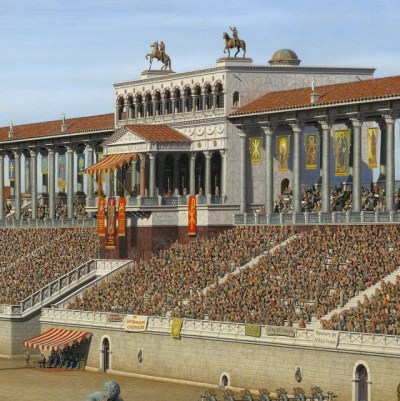
“Close to the walls of the palace is also a place of amusement belonging to the king, which is called the Hippodrome, and every year on the anniversary of the birth of Jesus the king gives a great entertainment there. And in that place men from all the races of the world come before the king and queen…No entertainment like this is to be found in any other land”
-Benjamin of Tudela

Unfortunately, the Fourth Crusade irreparably destroyed this wonder. They melted the statues, and the fires they started damaged the structure greatly. Niketas Choniates wrote with lament about it: “these barbarians, haters of the beautiful, did not allow the statues standing in the Hippodrome and other marvelous works of art to escape destruction, but all were made into coins…For a few copper coins, they delivered over the nation’s ancient and venerable monuments and cast these into the smelting furnace.”
FOR MY ARTICLE on the Monuments of the Hippodrome, Click HERE
7. Walls of Constantinople:

Could a list be complete without these wondrous walls? I do not think a set of defensive walls has played such a big part in history for such a long period like the walls of Constantinople did. They are a big reason the Roman Empire lasted until 1453, so many times opponents wanted to knock them off the map but they could not take Constantinople.
“Byzantine Constantinople might best be pictured as an impenetrable island fortress which in a pre-gunpowder age could be taken only through the negligence or connivance of the city’s inhabitants.”
-Eric McGreer, in the Cambridge Companion to Constantinople
FOR MY ARTICLE on the Theodosian Walls, Click HERE
BONUS WONDER: The Golden Automata of the Great Palace
This one almost made the list, I hated leaving it out!

“In front of the emperor’s throne there stood a certain tree of gilt bronze, whose branches, similarly gilt with bronze, were filled with birds of different sizes, which emitted the songs of the different birds corresponding to their species. The throne of the emperor was built with skill in such a way that at one instant it was low, then higher, and quickly it appeared most lofty; and lions of immense size (though it was unclear if they were of wood or brass, they were certainly coated with gold) seemed to guard him, and, striking the ground with their tails, they emitted a roar with mouths open and tongues flickering…”
-Liutprand of Cremona
Other choices I strongly considered were the Anastasian Wall/Long walls of Thrace, the Byzantine Beacon system, the baths of Zeuxippos, the Parthenon church, and the Automata of the throne room at the Palace of Magnaura.
Thanks for reading! Also, please checkout my Etsy Store!

